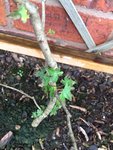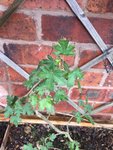Here's something from the Internet:
"Soil Pest and Root Rot Treatment
Mix one part of additive-free 35% hydrogen peroxide with ten parts water.
Water infected plants thoroughly. The soil will bubble as the oxygen is released.
For pests, water with the mixture twice a week, allowing the top 2 inches of soil to dry between watering. Root pests should subside within a week.
For root rot, water plants very thoroughly, then allow the soil to dry. The top 2-3 inches of soil should be completely dry before returning to a regular water regimen. If the process is done correctly, root rot can easily be treated with only one watering of peroxide.
Foliage Pesticide Spray
Mix equal parts 3% hydrogen peroxide and distilled water.
Use a spray bottle to thoroughly soak the infected plants. Make sure to get the undersides of the leaves.
Spray once a week or after it rains. Hydrogen peroxide both treats and further prevents pest infestation.
This weaker solution will prevent damage to the leaves but is effective as a general insecticide. I've found that it is effective against a variety of mites and aphids.
Because it also has fungicidal properties, one may find it as a possible solution to mildew and fungus outbreaks.
Water Treatment
For a general water treatment and dechlorinator, mix one tablespoon hydrogen peroxide for every gallon of water used.
The hydrogen peroxide acts instantly to drive out chlorine, excess iron and sulfates.
A Word of Warning
You'll be pleasantly surprised with the effectiveness of hydrogen peroxide for plants! My one word of caution is to avoid using it in the soil too often. Since it will easily rid your soil of harmful pests, it can also take its toll on beneficial soil organisms.
So, use it wisely and only treat when an infection or rot has been confirmed. Thanks for reading my article. Leave me any feedback or questions that you may have!
This content is accurate and true to the best of the author’s knowledge and is not meant to substitute for formal and individualized advice from a qualified professional.
© 2012 Zach
https://dengarden.com/gardening/Hydrogen-Peroxide-for-Plants
Zach has been an online writer for over seven years. His writing focuses on gardening, cooking, and aquariums."


